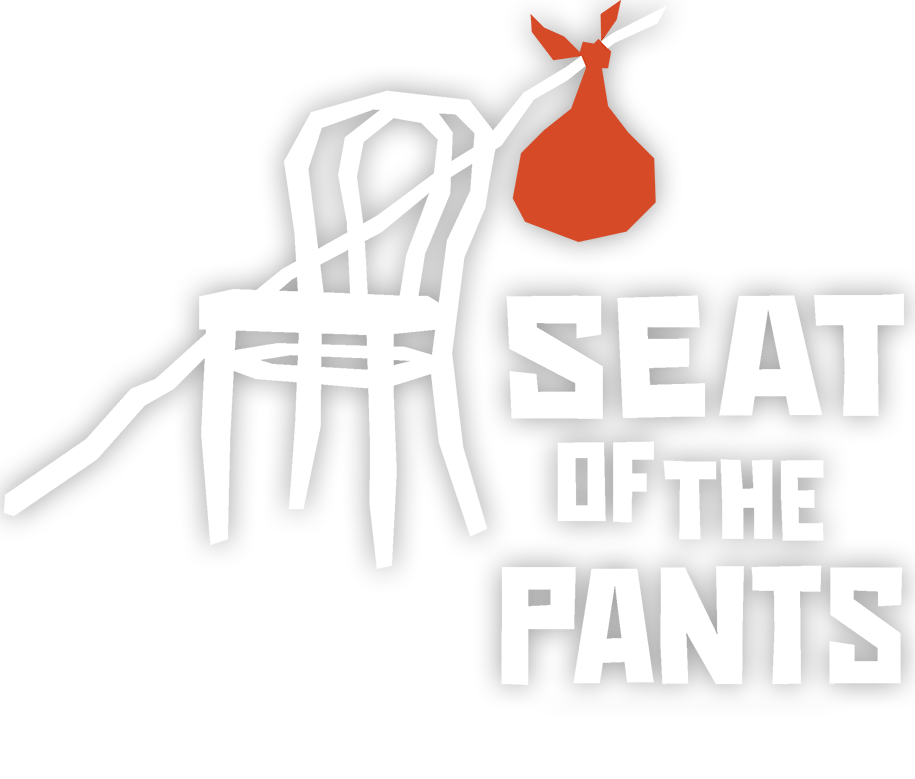SCULPTING STILLNESS: BY MICHAEL GLAVAN, ENSEMBLE MEMBER
Part of the process that I don’t think gets shared enough is the spyback. All throughout school, in work that we do, and in our personal relationships it’s a fairly common occurrence to receive grades, feedback, or communication in such a way that allows one to reflect, learn, grow, and evolve. Sometimes I feel that this step gets stunted in art-making - that it’s somehow too sensitive or too personal to have genuine conversations about…which then starts to feel antithetical to the function of art…right? So then, we’re cut short of constructively sharing what we learn or how we learned over the course of a production. I want to try to normalize sharing artistic course corrections or lessons we take away when we aren’t perfect.
Now I’m a fairly energetic guy, or at the very least, thoroughly caffeinated. Especially when trying to get ideas moving, it’s been a practice of mine to get ambulatory and think/process “on-the-move”. As of this past year, I’ve noticed how this has become a habit of mine in a rehearsal room. Whether I’m acting or directing, I have a tendency to get peripatetic and bounce around the room when trying out ideas. Having had some good fortune to get to play around with some really different projects as of late, I’ve come to a realization that this habit has begun to manipulate my art-making instead of inspiring it.
Last season I had the fantastic opportunity to direct Itamar Moses’ Bach at Leipzig, a script that bounced zanily on the page in a rhythm I felt I really understood. The characters were larger than life and yet had a tendering vulnerability to them. It was a rambunctious narrative with loads of tom-foolery and tempered with moments of thoughtful insight. I really resonated with this play with a brimming enthusiasm. That enthusiasm inspired me to get the entire production team up and working on our feet as much as possible - after all that’s how I process. In my eagerness to explore “imaginary bodies” AND to wander through the thematic and atmospheric rooms of the “palace exercise” AND to experiment through lane work of the Viewpoints, I neglected precious time at the table dedicated to simply reading, interrogating, and observing our text as an ensemble. My enthrallment to the wilder elements of the play’s plots and structures and tones had also made me insecure and impatient to trust the part of the process that didn’t immediately reflect that same energy.
I know first hand as an actor the importance of “table time.” Physicality and instincts are built so much clearer and stronger (and often faster) when informed by an entire team’s inspiration, conversation, and collaboration - things that come to the forefront during table time.
Alas, I had identified a perceived threat within the script that this play could be difficult to sustain due its length and dense text if it felt too stationary and “talky”. In response, I went to work studiously attempting to fuel options of inspiration for movement and action for the entirety of the play. Wanting to see if these inspirations were viable, I was voracious for us to explore these options on our feet, quickly collaborating with each actor in the successive beats rather than charting the whole course with them from the beginning. THEN, not wanting to make the actors feel trapped by prescribed choices, I refrained from “setting” any of our blocking too firmly so as to leave space for the magic of future inspiration to strike. (The facepalm-clarity of hindsight is equally cringey and instructive: this was a classic cart/horse scenario with added irony of having a fear of cart/horse scenarios.)
In projects post Leipzig, I’ve taken special note of the value of sitting still(er). In the unintended chaos of constant motion, it’s hard to maintain a clear target or mission. Taking time in stillness and quiet examination - while personally uncomfortable for me - almost always yields a harvest. It may not be my natural state, but I’m finding when I’m hyper intentional about sculpting out that sort of space and time, I’m actively challenging my habits as an artist and I make stronger conscious choices as a(n) [insert: actor, director, producer, dramaturg, teacher, etc.].
There are PLENTY of other things I could point out in my work as places worthy of improvement, but as I boil them down, I’m learning that most of them come to a shared root.
There are also PLENTY of things I was wildly proud of in Bach at Leipzig. I relish having had the foundational scaffolding of our work in Action Analysis, the Rhythmical Wave, Laws of Triplicity and Climaxes and Polarity (oh my!); and exploring an enormous range of techniques and tools with such a committed, brave, and diverse group of artists. I often came home astounded-by and teeming-with inspiration from the symphonies we had orchestrated in the bare and silent rehearsal spaces. It was an embarrassment of riches when it came to talent. Alas, we (I) are (am) bound to learn more from our (my) failures than our (my) victories.
For me, I’ve got to build a new habit of trust. And until that establishes, I’ve got to be mindful to sculpt out that time for stillness.
I can’t express enough the gratitude and appreciation I have for the process and the people connected to that show. It was a beautiful space to experiment, explore, build, and in some ways fail, AND STILL end up with something unique and beautiful. I think that’s what Bach at Leipzig was about - having lofty [if misguided] ambition, and despite glorious failure, finding transformational beauty.

